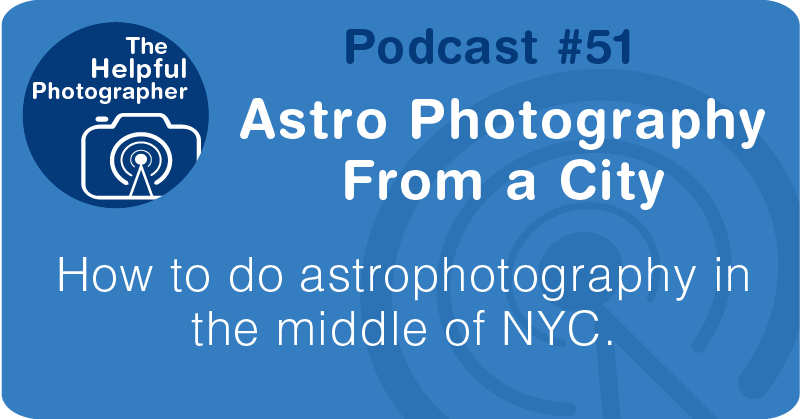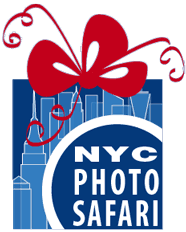Astro Photography From a City #51
Photo Tips Podcast: Astro Photography From a City #51

iTunes
Google
Spotify
Tune In
Stitcher
RSS
Pandora
Transcript
Photo Tips Podcast: Astro Photography From a City #51
Zim: Today on the podcast I’m welcoming Markice Stevenson of South Central Los Angeles, Markice is an avid amateur astro photographer who's doing some amazing photos of the night sky right in his backyard. And I've asked him to join me to tell me how does it.
Hi Markice welcome to the podcast thanks for joining me.
Markice: Hi Zim, thanks for having me today.
Zim: Right out of the box, I want to know are you taking pictures of the night sky with a regular old DSLR camera through a lens, or are you using a telescope?
Markice: I'm using a telescope to take pictures of the sky.
Zim: Okay, so now are you attaching a DSLR to that telescope or how are you capturing these images?
Markice: No no I'm using a dedicated astronomy camera to take images.
Zim: What's the difference between a dedicated astronomy camera and like a dsr?
Markice: That's a good question. The dedicated astronomy camera has a cooling system in place.
Zim: That's really interesting because I've never heard of a camera with the cooling system. Why would you need a cooling system inside your camera?
Markice: Well, you want cooling system in place so that you can cool down the sensor.
Zim: Because if the sensor heats up we were going to get more noise, is that right?
Markice: Yeah that's absolutely correct.
Zim: Are you getting noise because you're doing really long exposures or are you experiencing noise all the time?
Markice: All the time. In general or in practical terms when you take an image you can expect lawyers to be there.
Zim: Right and you don't want to be introducing a fake stars enter image right?
Markice: No, no you don't.
Zim: Okay so how cold do you have to cool your sensor for there not to be any noise on your image?
Markice: At about negative -10C is where you'll start to see your noise levels really low.
Zim: When you're shooting the nice guy are you doing this in one shot or you doing multiple shots?
Markice: No it's not as simple as point and shoot like lunar images, you'll be taking multiple images over multiple nights.
Zim: How are you shooting images night after night of the night sky? Because as far as I understand the stars are moving across the sky over the course of the evening.
Markice: Yes so well I use in equatorial mount with my telescope but for DSLR users, you might want to use a star tracker to compensate for the rotation of the earth.
Zim: Oh, right, you know I've seen these devices; it mounts on top of your tripod and you put your camera on top of that right?
Markice: Yes. And you add a counterweight or something of that sort to maintain balance.
Zim: Okay and that's just tracks the stars as it moves across the sky?
Markice: Correct it'll track a star or there’s a new feature called multi star guiding that also enables you to do the same thing.
Zim: How much do these star trackers cost, do you know?
Markice: They cost around $250 and up.
Zim: My understanding is that you're shooting these amazing pictures of the night sky from your backyard in South Central Los Angeles, which has about as much light pollution as we have right here in New York City. How are you doing that? I've heard that you can use something like a light pollution filter to help with that. Are you using that? And what is your experience with that?
Markice: So I’ve personally use UV IR cut filter as well as a light pollution filter but no filter is necessary. I found the UV IR cut filter to be helpful and shooting broadband targets and the light pollution filters for narrow band targets.
Zim: I got a back you up here, if you're not using any filters does that mean that I can just take my camera out and point it at the sky and take these amazing pictures too? I mean. okay so I got my start tracker and I've got my camera, but I get the feeling there's something missing here what's missing here?
Markice: We absolutely can start out that way what you want to be really careful about your exposure time and you'll also have to keep in mind that you're stacking. So you want a lot of images.
Zim: Oh that's right because earlier you said you're shooting a couple nights or a few nights in a row. How many pictures are you actually taking?
Markice: I've taken as little as half an hour worth of images, all the way up to twenty hour images which is around thirty seconds subs for two thousand frames or two thousand individual images and I stack them altogether.
Zim: Wow, two thousand images stacked? I get this feeling the device showed that into my Photoshop that I'm probably gonna blow up my computer. Are you using Photoshop what software are you using to do this?
Markice: You can probably use Photoshop but I use Deep Sky Stacker. It's also important to keep in mind that I'm taking a lot of really short subs and you may not be doing that. You might take ten short subs if you're shooting the Milky Way or a hundred of a deep sky object and it won't take as much space and it will be as much demanding on your computer.
Zim: When you say sub do you mean an image?
Markice: Yes those are individual images.
Zim: And when you say short, what do you mean by short? Are we talk about one second, two seconds or how long are you shooting for?
Markice: I'm categorizing a short sub is anything under a minute and then two minutes that's a longer sub.
Zim: Okay, in photography anything over a second is considered pretty long for most people.
Markice: Really? Oh, yeah because it’s point shoot.
Zim: It's a point and shoot.
Markice: That's right yeah I'm not thinking about photography like this. That’s one of the things that’s really different about both of ours, I keep assuming that they are almost exactly the same.
Zim: Well it's basically almost exactly the same but you are definitely doing a whole lot more than we are to get to the shot.
So we're running a little short on time. I want to run by what we just talked about and see if I got everything right. If you really want to do some amazing night photography you can actually do this in your back yard in the middle of the city, except it's gonna take a lot of images to do it. And to do a lot of images and stack them together, you're going to need some kind of device that will track the stars across the sky as you take twenty and thirty second exposures over the course of the night, unless you want star trails in which case you don't need a tractor at all. You don't even need filters if you're doing that and you can get free software called Deep Sky Stacker and that's pretty much it did I miss anything?
Markice: No that's all correct. Most of the stuff that you need will probably be available to you already, and you may have to just go look for a star tracker but as far as the program in the computer that you use it on that's what you have already yeah that's about it.
Zim: Thanks so Markice. Have a good one!
Markice: Thanks for having me.











